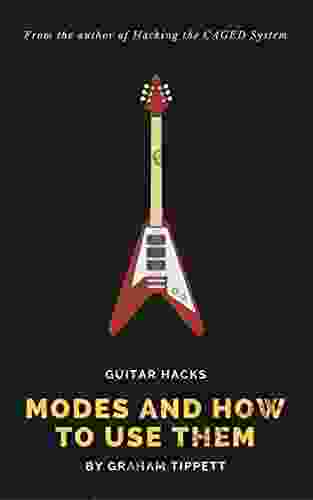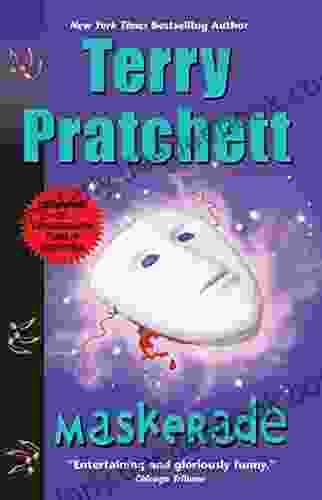Modes: A Comprehensive Guide to Their Use and Significance in Music

In the vast realm of music, modes hold a prominent position, shaping the melodic and harmonic structures of musical compositions. They are a set of scales that share similar characteristics but differ from the traditional major and minor scales commonly used in Western music. Understanding modes and how to use them can unlock a world of expressive possibilities for musicians and composers alike.
What are Modes?
Modes are derived from the diatonic scale, the seven-note collection of notes that forms the basis of Western music. By starting on different notes within the diatonic scale and rearranging the intervals between them, we create different modes. There are seven modes in total, each with its unique sound and character.
4.4 out of 5
| Language | : | English |
| File size | : | 2028 KB |
| Text-to-Speech | : | Enabled |
| Screen Reader | : | Supported |
| Enhanced typesetting | : | Enabled |
| Word Wise | : | Enabled |
| Print length | : | 51 pages |
| Lending | : | Enabled |
- Ionian (Major): The most familiar mode, corresponding to the standard major scale (1, 2, 3, 4, 5, 6, 7). It conveys a sense of brightness and optimism.
- Dorian: Similar to the minor scale, but with a raised sixth (1, 2, b3, 4, 5, 6, b7). It evokes a haunting, somewhat melancholic mood.
- Phrygian: A minor mode with a lowered second (1, b2, b3, 4, 5, b6, b7). It creates a sense of mystery and exoticism.
- Lydian: A major mode with a raised fourth (1, 2, 3, #4, 5, 6, 7). It imparts a bright, almost ethereal quality.
- Mixolydian: A major mode with a lowered seventh (1, 2, 3, 4, 5, 6, b7). It conveys a bluesy, laid-back feel.
- Aeolian (Minor): The most commonly used minor mode (1, 2, b3, 4, 5, b6, b7). It elicits feelings of sadness and longing.
- Locrian: A minor mode with a lowered second and fifth (1, b2, b3, 4, b5, b6, b7). It is the most dissonant mode and is rarely used.
Using Modes in Music
Incorporating modes into your music can add depth and nuance to your compositions. Here are some ways to use modes effectively:
- Melody: Modes can be used to create melodies that have a unique character. For example, a melody in the Dorian mode will have a haunting, almost folk-like sound, while a melody in the Lydian mode will convey a sense of brightness and optimism.
- Harmony: Modes can also be used to create harmonies that are rich and complex. By using chords built on different modes, you can create unusual and interesting sound combinations.
- Scales and Improvisation: Modes provide a framework for improvisation. By understanding the scale patterns and intervals of different modes, improvisers can explore new melodic and harmonic possibilities.
- Composition: Modes can be used to create entire compositions. By basing a piece around a particular mode, you can give it a distinct and cohesive sound.
Examples of Modes in Music
Modes have been used extensively in music throughout history. Here are some notable examples:
- Folk music: Many traditional folk melodies are based on modes. The Dorian mode is commonly found in Celtic and Eastern European music, while the Mixolydian mode is prevalent in blues and bluegrass music.
- Classical music: Composers from the Middle Ages to the present day have used modes in their works. Gregorian chant, for example, is based primarily on the Dorian mode, while composers such as Bach, Mozart, and Debussy have incorporated modes into their compositions.
- Jazz and blues: Modes play a significant role in jazz and blues improvisation. The Dorian and Mixolydian modes are particularly common in these genres.
- Rock and pop music: Modes have also found their way into rock and pop music. The Phrygian mode is often used to create a sense of mystery and tension in rock and metal music, while the Lydian mode imparts a bright and ethereal quality to pop and electronic music.
Modes are a fundamental aspect of music theory and practice. By understanding modes and how to use them, musicians can create melodies, harmonies, and compositions that are rich and expressive. Whether you are a composer, improviser, or simply a curious listener, exploring the world of modes can enhance your musical journey and open up new possibilities for creativity.
4.4 out of 5
| Language | : | English |
| File size | : | 2028 KB |
| Text-to-Speech | : | Enabled |
| Screen Reader | : | Supported |
| Enhanced typesetting | : | Enabled |
| Word Wise | : | Enabled |
| Print length | : | 51 pages |
| Lending | : | Enabled |
Do you want to contribute by writing guest posts on this blog?
Please contact us and send us a resume of previous articles that you have written.
 Book
Book Page
Page Chapter
Chapter Text
Text Story
Story Genre
Genre Library
Library Paperback
Paperback Magazine
Magazine Paragraph
Paragraph Sentence
Sentence Bookmark
Bookmark Foreword
Foreword Footnote
Footnote Scroll
Scroll Codex
Codex Tome
Tome Classics
Classics Library card
Library card Memoir
Memoir Dictionary
Dictionary Resolution
Resolution Librarian
Librarian Borrowing
Borrowing Periodicals
Periodicals Study
Study Scholarly
Scholarly Lending
Lending Reserve
Reserve Journals
Journals Rare Books
Rare Books Interlibrary
Interlibrary Literacy
Literacy Study Group
Study Group Thesis
Thesis Storytelling
Storytelling Awards
Awards Book Club
Book Club Theory
Theory Textbooks
Textbooks Phil Baker
Phil Baker Shannon Brinkley
Shannon Brinkley Sarah Leonard
Sarah Leonard Amit Ahluwalia
Amit Ahluwalia Sarah Hogle
Sarah Hogle Mark Feldstein
Mark Feldstein Nnedi Okorafor
Nnedi Okorafor M R Nelson
M R Nelson Ann Leckie
Ann Leckie Nic Tatano
Nic Tatano Laurel A Rockefeller
Laurel A Rockefeller Terri Hooley
Terri Hooley Mark Prins
Mark Prins S Briones Lim
S Briones Lim Allison Blake
Allison Blake Henry Rider Haggard
Henry Rider Haggard Mildred Lapointe
Mildred Lapointe Christopher Daniell
Christopher Daniell Gyles Brandreth
Gyles Brandreth Johanna Wilson
Johanna Wilson
Light bulbAdvertise smarter! Our strategic ad space ensures maximum exposure. Reserve your spot today!
 Robbie CarterFollow ·18.6k
Robbie CarterFollow ·18.6k W.B. YeatsFollow ·16.5k
W.B. YeatsFollow ·16.5k Gene SimmonsFollow ·17.5k
Gene SimmonsFollow ·17.5k Emanuel BellFollow ·15k
Emanuel BellFollow ·15k Steve CarterFollow ·6.3k
Steve CarterFollow ·6.3k Efrain PowellFollow ·5.3k
Efrain PowellFollow ·5.3k Roy BellFollow ·4.4k
Roy BellFollow ·4.4k Dylan MitchellFollow ·6.9k
Dylan MitchellFollow ·6.9k

 Houston Powell
Houston PowellMusorgsky and His Circle: A Russian Musical Revolution
Modest Mussorgsky was a Russian...
 Barry Bryant
Barry BryantRanking the 80s with Bill Carroll: A Nostalgic Journey...
Prepare to embark on a captivating...

 Kelly Blair
Kelly BlairThe Diplomat's Travel Guide to Festivals, Holidays, and...
India is a land of vibrant culture and...

 José Saramago
José SaramagoFancy Nancy Nancy Clancy: Late-Breaking News!
Nancy Clancy is back with all-new adventures...

 Trevor Bell
Trevor BellGestalt Psychotherapy and Coaching for Relationships: A...
Relationships...

 Federico García Lorca
Federico García LorcaThe Last Love of George Sand: An Enduring Legacy of...
At the twilight of her remarkable life,...
4.4 out of 5
| Language | : | English |
| File size | : | 2028 KB |
| Text-to-Speech | : | Enabled |
| Screen Reader | : | Supported |
| Enhanced typesetting | : | Enabled |
| Word Wise | : | Enabled |
| Print length | : | 51 pages |
| Lending | : | Enabled |












